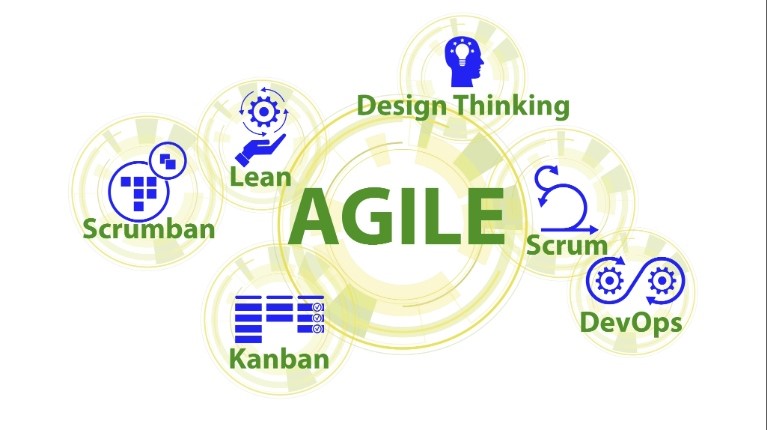What You Need To Know About PI Planning In Agile

Large Agile programs face a constant challenge: keeping teams aligned as priorities evolve and work scales. Without structured alignment, teams move in different directions, and business objectives lose focus. PI planning Agile events solves this problem with a clear cadence that brings Agile Release Trains together to define priorities, address risks, and commit to shared objectives.
Program Increment (PI) Planning is a core element of the Scaled Agile Framework. It allows teams and leaders to review progress, refine the program backlog, and agree on what the next increment should deliver. Participants can leave with a clear plan, defined objectives, and a shared understanding of how to progress. This structured approach drives accountability and collaboration across the enterprise.
PI Planning Agile: The Rhythm of Enterprise Collaboration
PI Planning is a two-day event held every 8 to 12 weeks. During that time, every team within an Agile Release Train comes together; sometimes in a physical room, sometimes virtually, and often through hybrid collaboration tools.
The cadence creates a predictable cycle. It allows leadership and teams to step back from the noise of delivery and agree on what matters most for the next increment.
The format has presentations, breakout sessions, plan reviews, and retrospectives into a structured flow. Business owners and leaders set the stage by sharing the broader context and vision. Product managers highlight the product vision and upcoming features.
Teams then break into smaller groups to refine backlogs, estimate capacity, and surface dependencies. These conversations can be intense. However, they spark the kind of transparency that keeps momentum alive. The result is a committed plan with clear objectives, known risks, and shared ownership that no spreadsheet can provide.
How Scaled Agile PI Planning Works in Practice
Scaled Agile PI planning is both structured and dynamic. It starts broadly, with leadership and product owners sharing business context, market trends, and program vision to give the ART a clear direction. Teams then plan in detail, breaking goals into increments and identifying dependencies.
Draft plans are shared openly, allowing everyone to see the entire picture. Risks are reviewed and managed, and then plans are refined based on feedback. A confidence vote gives every participant a voice, and a retrospective captures lessons for the next cycle.
The power of PI planning comes from structure and openness. Developers bring expertise, product owners set priorities, and leadership provides context.
Why Agile PI Planning Matters
Agility is more than delivering faster. It is about adapting faster and aligning better. Without consistent PI Planning, alignment becomes fragile. Teams may optimize locally but drift away from enterprise strategy. Dependencies remain hidden until they derail progress. Goals become abstract rather than actionable.
PI Planning solves these problems by facilitating real-time collaboration. It provides teams with space to discuss dependencies openly, prioritize tasks collectively, and commit with confidence. It fosters trust by encouraging transparency about risks and capacity.
Most importantly, it links day-to-day work directly to business objectives, turning strategy into action instead of leaving it as a slide deck.
Remote or hybrid teams also benefit. While face-to-face collaboration has always been central to PI Planning, digital collaboration platforms like Miro now make distributed planning more effective. Shared program boards, real-time updates, and breakout tools recreate the intensity of physical sessions. What matters most is participation and engagement, not location.
The Difference Between PI Planning and Sprint Planning
One of the common misconceptions in Agile is confusing PI Planning with Sprint Planning. Both matter, but they serve distinct purposes.
PI Planning looks across the horizon of 8 to 12 weeks, aligning multiple teams to shared objectives that reflect strategic direction. Sprint Planning focuses on the immediate one-to-four-week window, examining what a single team can accomplish within that iteration.
PI Planning is the big room event where everyone in the ART synchronizes on goals. Sprint Planning is the tactical meeting where each team commits to delivering the next increment of value. Together, they provide the cadence that keeps Agile both strategic and grounded in delivery.
Best Practices for PI Planning Success
The most successful PI Planning sessions start long before the event itself. Leaders prepare by clarifying priorities and communicating business context. Teams refine their backlogs so that discussions focus on planning rather than backlog grooming. Facilitators plan for both structure and flexibility, creating space for collaboration without losing focus on outcomes.
During the event, clear communication is key. From developers to business owners, participants contribute perspectives that shape the plan. Risks must be surfaced openly, with a shared understanding of how they will be managed. Transparency in this stage prevents surprises down the line.
After the event, the work does not stop. Plans evolve as delivery progresses, but the foundation of alignment remains strong. Regular syncs and reviews keep teams accountable and connected to the objectives defined during PI Planning. Using digital tools to maintain visibility into progress ensures that collaboration extends beyond the event itself.
Scaling Agile with Radus Software LLC
Organizations cannot afford to let alignment falter or strategy drift. At Radus Software LLC, we built Metronome, our AI-powered collaboration suite, to make enterprise agility achievable and sustainable.
Metronome combines strategy, planning, and execution with tools that support enterprise Agile planning and project management. Our platform simplifies planning and integrates easily across systems.
With the right tools, it transforms planning into a catalyst for trust, focus, and speed. Ready to see how it works for your teams? Request a demo and experience how Metronome brings PI Planning to life.



